Few plants are as evocative as the palm tree. They epitomize a notion of paradise, of exotic getaways and warm beaches, perhaps because they are emblematic of the tropics. Much as the palm tree tends to conjure up images of the tropics, these woody perennials are not always restricted to tropical places.
It is true that in nature, palm trees are better adapted to thrive in very warm, sunny regions. But palm trees can and do frequently lend themselves to untraditional landscapes as well. What this means is that palm trees can successfully propagate even in wet, humid, sub-tropical places like North Carolina. In North Carolina, palm varieties such as the Sabal palmetto, windmill palm, and pindo palm are gaining wide familiarity for their cold hardiness. In this article, we will explore 12 palm tree varieties that can grow and thrive in the state. If you’re in North Carolina and yearning to recreate the ‘cherished tropical feel’ in your garden, these palm tree varieties are probably just what you need.
Windmill Palm

With its textured trunk and canopy of fan-shaped fronds, the windmill palm lends a great tropical feel!
©rSnapshotPhotos/Shutterstock.com
Windmill palms (Trachycarpus fortunei) are the hardiest palms in the world, being able to endure temperatures as low as 10°F (hardy zones 8A-11). This slow-growing palm, with a single, thick, fiber-covered trunk and long fan-like fronds that resemble a windmill, can adapt to an array of soils. They are relatively drought-tolerant once established, and do well in part sun and part shade. Fully mature plants may grow up to an average height of 25-40 feet.
The windmill palm is a popular decorative plant in North Carolina. It can be found in the Research Triangle Park and Raleigh area. In Raleigh, the JC Raulston Arboretum also has several cultivars of the Trachycarpus fortunei such as ‘Bulgaria’, ‘Norfolk’ and ‘Taylor’s Hardy’ on display.
Canary Island Date Palm

Canary Island date palms never fail to make a stunning statement with their uniquely shaped trunks and huge canopy of arching fronds.
©Marinodenisenko/Shutterstock.com
The Canary Island date palm (Phoenix canariensis), is also called ‘pineapple palm’ as the diamond patterns on the tree’s bark are similar to that of pineapple skin. These palm trees are very slow-growing, although they can reach a height of 40-50 feet, once they are fully mature. They thrive best in USDA hardiness zones 9A-11.
Canary Island date palms grow well in a wide range of soil types. They are also drought-tolerant and moderately tolerant of salt spray. The palm is at the height of its glory in spring with large clusters of orange flowers. In fall, these bright orange flowers turn into bright orange showy fruits.
California Fan Palm
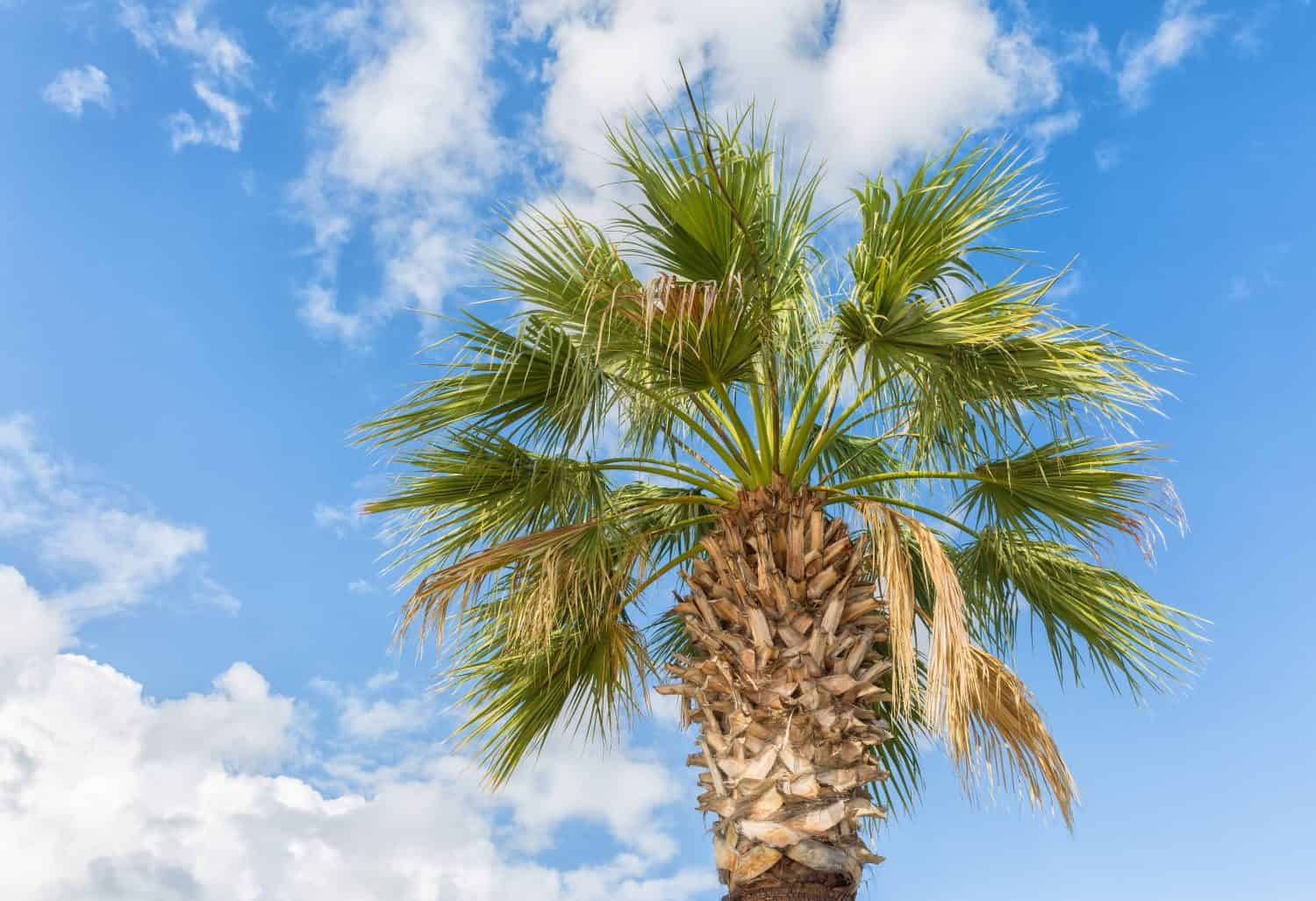
California fan palms have a stunning structure that makes for an eye-catching accent in any landscape!
©Mark Godden/Shutterstock.com
The California fan palm (Washingtonia filifera) is the only palm native to the Western United States. They grow to a height of 49-66 feet, making them the country’s largest native palm. The tree boasts a sturdy columnar trunk with waxy fan-shaped fronds.
California palms thrive best in USDA hardiness zones 8A-11. These palm trees do well in North Carolina as they can adapt to a wide variety of soils and are highly drought-resistant.
Cabbage Palm
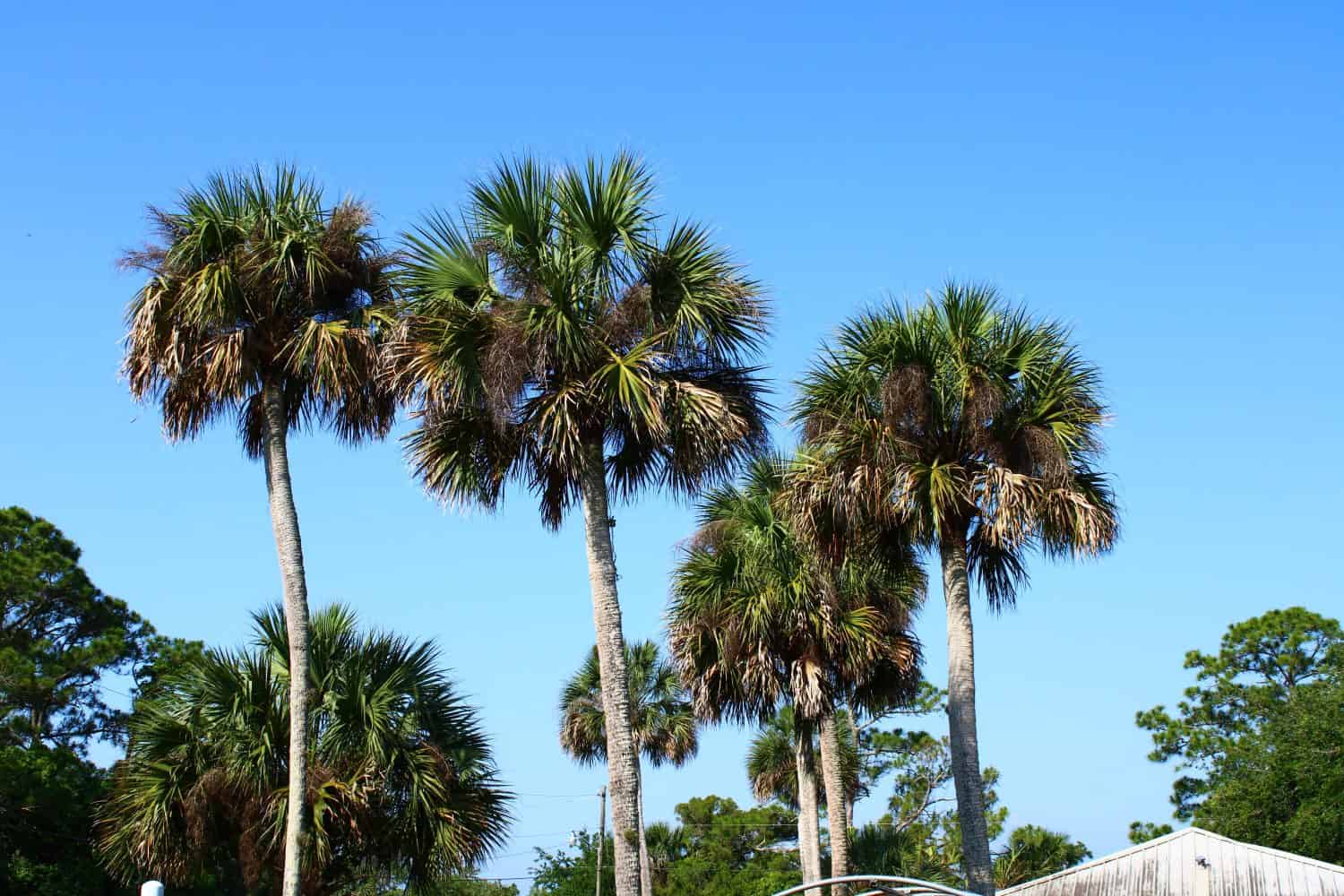
The crisp, white palm hearts of the cabbage palm are edible and considered a delightful delicacy by many people!
©William Peter Blauvelt/Shutterstock.com
Cabbage palms (Sabal palmetto), also widely known as sabal palms are native to Florida as well as the coastal regions of North and South Carolina and Georgia. The palm tree gets its name for its young, edible leaves that have a cabbage-like flavor. They can withstand temperatures as low as 10°F, making them ideal for hardiness zones in the range of 8A-11. They grow up to a height of about 30-35 feet.
The slow-growing cabbage palm is known to thrive in diverse soil and weather conditions. In North Carolina, however, these palms are strictly a coastal species and restricted to maritime forests and margins of tidal marshes.
Wild Date Palm

Wild date palms are a bold landscape specimen with their textured trunk, blue-green leaves, and yellow inflorescences!
©Muhammed Zeynel Ozturk/iStock via Getty Images
The Wild date palm (Phoenix sylvestris) is a slow-growing palm that can thrive well in regions where temperatures do not fall below 15°F (USDA zones 8B-11). The palm is native to India and the southern regions of Pakistan. Mature plants can reach up to a height of 50 feet. They thrive best in direct sunlight and prefer well-drained sandy soils. The wild date palm is drought-resistant but grows better when watered regularly.
Sago Palm Tree

This palm-like evergreen perennial is perfect to give your entryway an inviting look!
©Cristi Kerekes/Shutterstock.com
The sago palm (Cycas revoluta) is a cycad rather than a real palm and only bears a superficial resemblance to palm trees. These plants are native to the tropical islands of southern Japan. They grow well in full sun or partial shade (USDA zones 8B-11). Sago palms are slow-growing and take 50 years to reach a height of up to 15 feet. ‘Sago’, a type of edible starch is extracted from these plants.
European Fan Palm

The mid-sized European fan palm is beautiful with its fan-like fronds that range from deep green to silver!
©ToKa74/Shutterstock.com
The European fan palm (Chamaerops humilis) is a slow-growing, clumping palm that is native to Europe. It is hardier than most palms and will flourish in USDA hardiness zones 8 to 11. They grow to a height of 8 to 15 feet and prefer partial sun and partial shade. They are also highly drought tolerant.
In spring, this palm develops small clusters of yellow flowers, followed by inconspicuous fruits.
Cardboard Palm
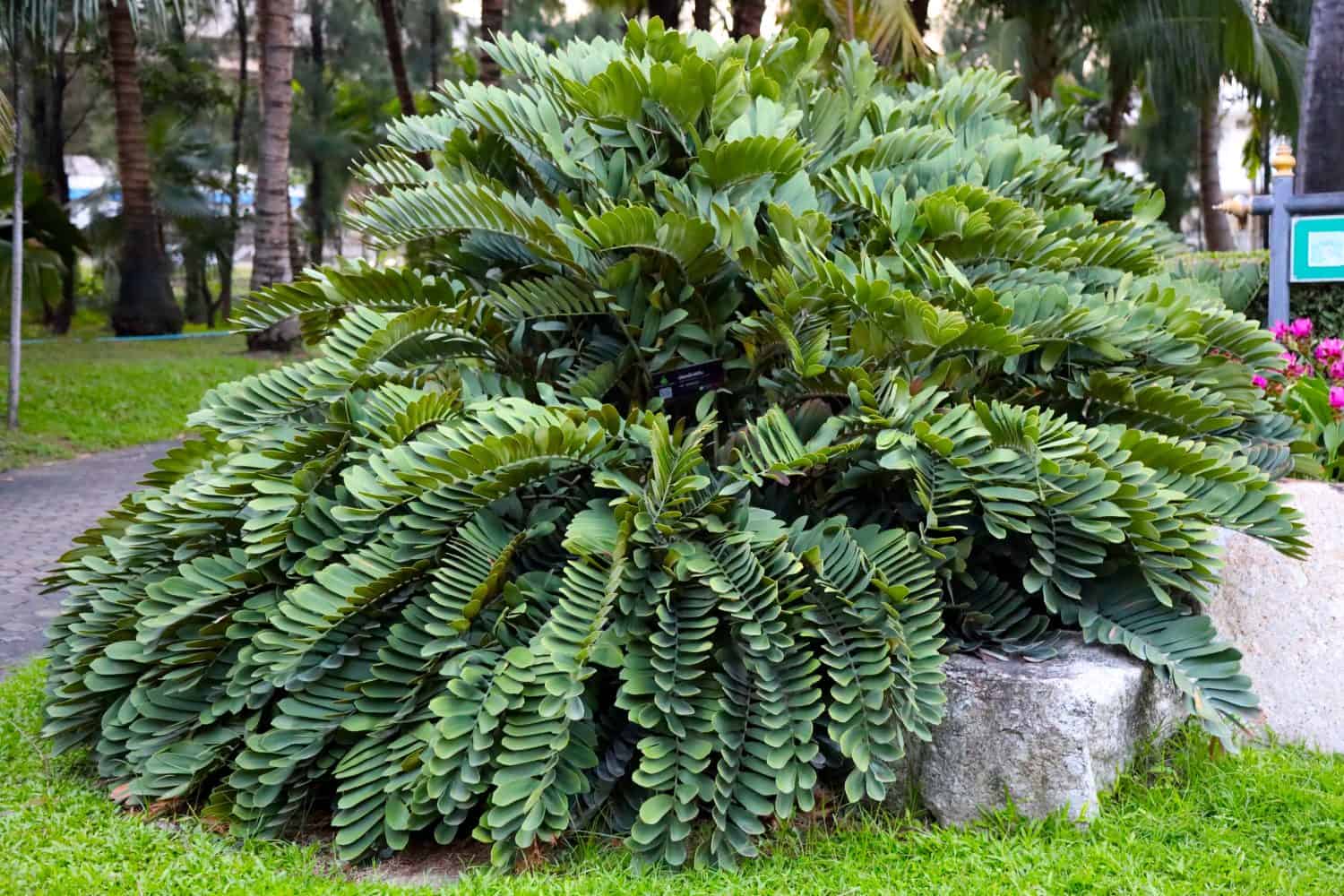
The close-growing foliage and lush greens make the cardboard plant a delight to behold!
©ZANTACUZ/Shutterstock.com
Cardboard palms (Zamia furfuracea), also referred to as ‘cardboard plants’ are cycads and not true palms. Their striking resemblance to palm trees and ability to tolerate neglect, however, make them well-loved.
The cardboard plant is native to Mexico and is hardy in USDA zones 9-11. They grow best in full sun or shade and tolerate a variety of well-drained soils.
Saw Palmetto Palm
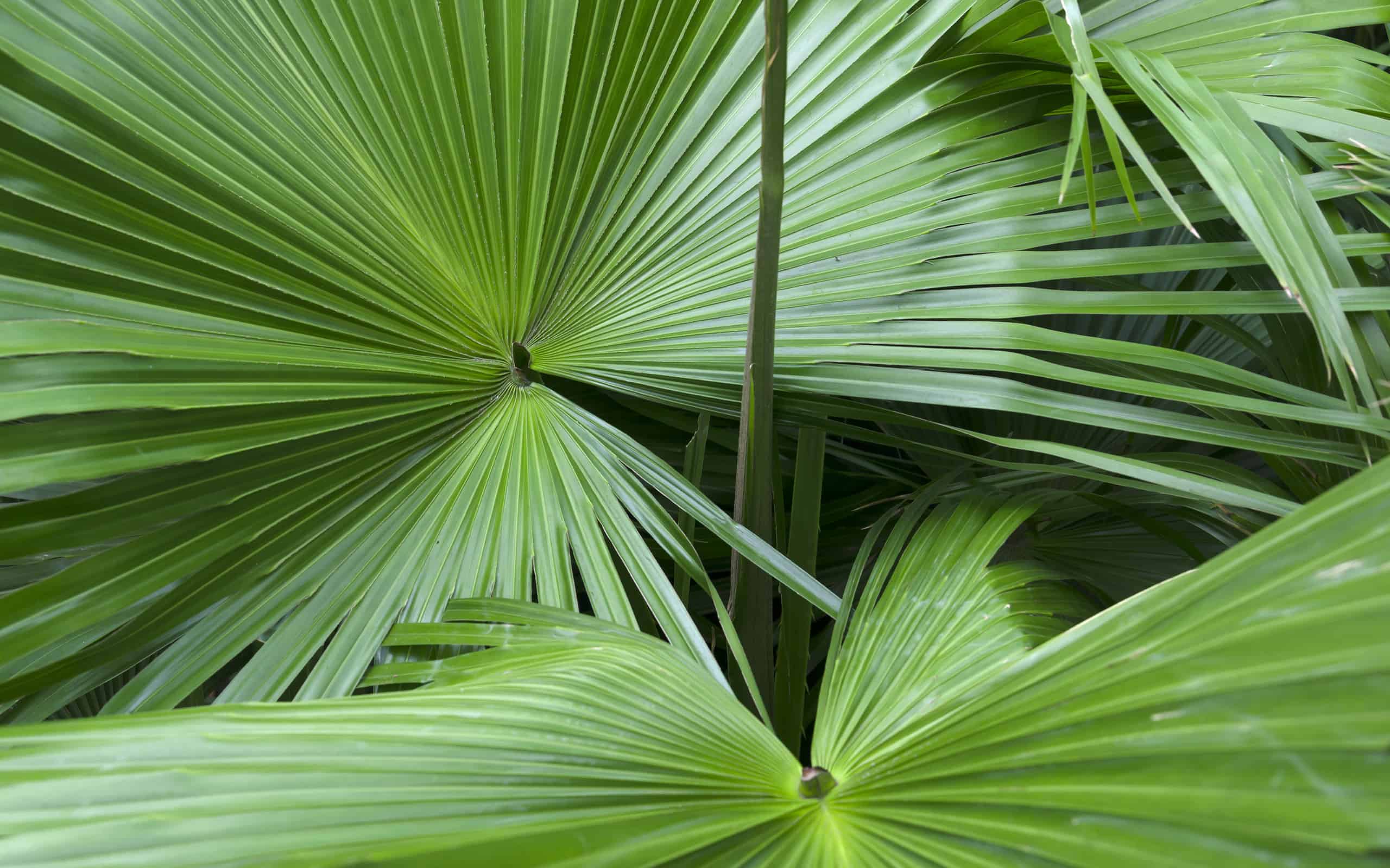
With sharp, saw-tooth spines along its stem, saw palmettos are tough as nails!
©lizfernandezg/iStock via Getty Images
Saw palmettos (Serenoa repens) are small fan palms that favor moist areas (USDA zones 8A to 11). They are typically found in the coastal plain and to the north of the Gates and Currituck counties in North Carolina.
The saw palmetto can grow to a height of up to 15 feet but is usually around 4-8 feet tall. These palms are quite versatile and hardy and can thrive in a variety of growing conditions from full sun to shade or even wet or dry soils. They are also moderately salt tolerant and can resist damage from hurricanes and flood storms.
Pindo Palm
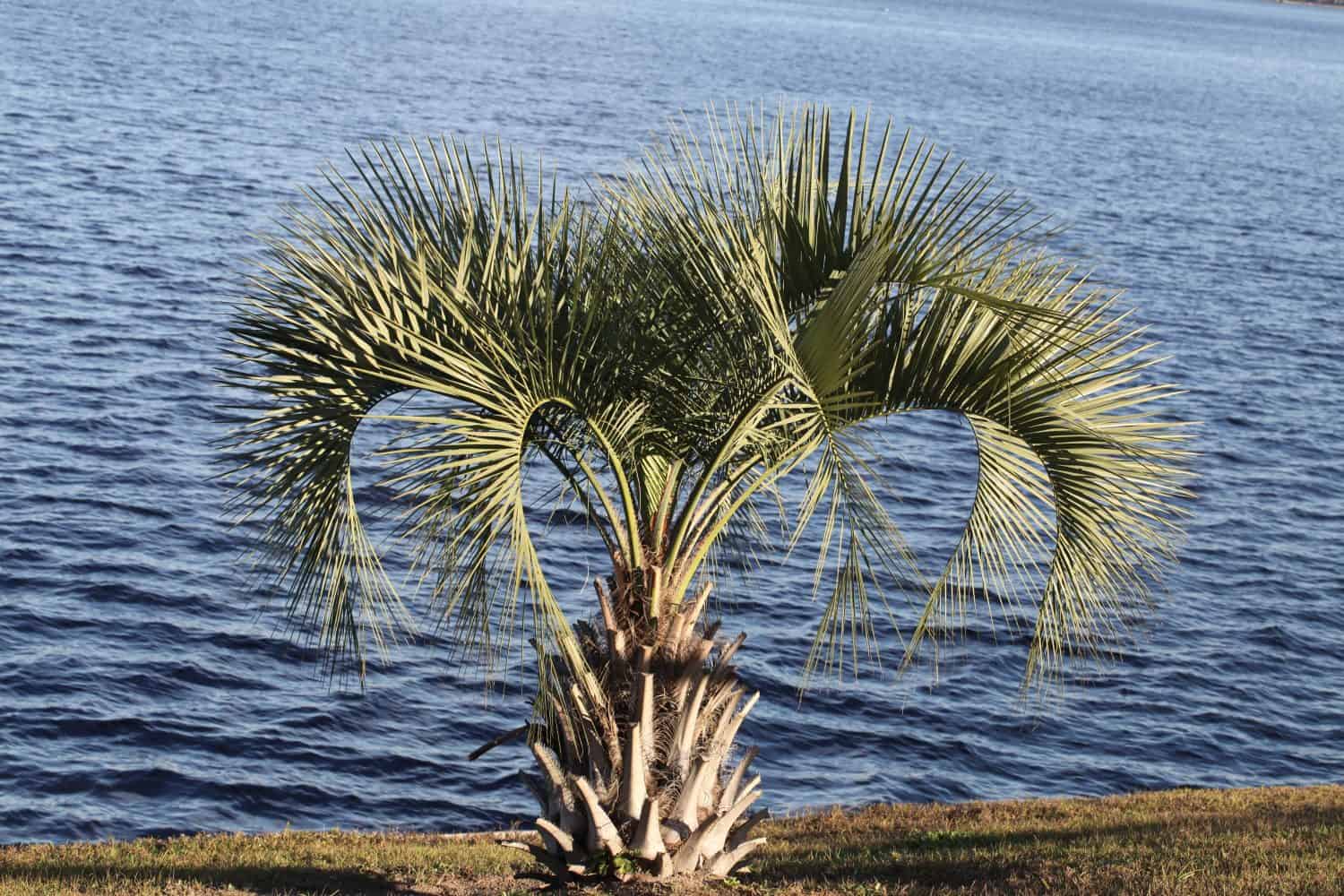
Pindo palms are stunners and great for creating a dramatic focal point in a landscape!
©Natalya Chernyavskaya/Shutterstock.com
The pindo palm (Butia capitata) or jelly palm is a small, single-stemmed palm that prefers cooler, less humid climates. It has unusual cold tolerance and is hardy down to 10°F (USDA zone 8A). The palm tree is slow-growing and grows up to a height of 15-20 feet, once fully mature. They grow well in either full sun or partial shade but are intolerant of salt spray.
Needle Palm
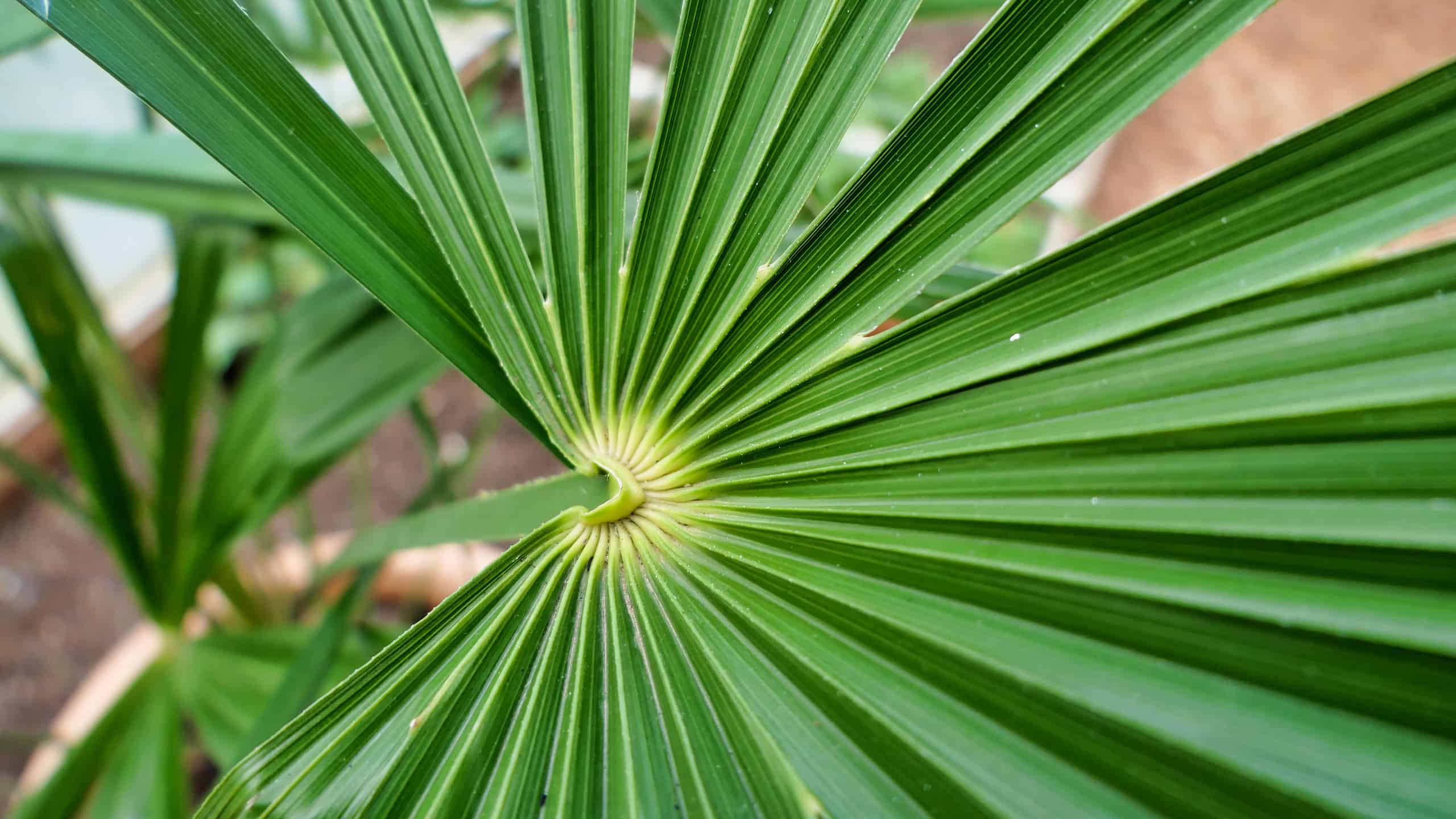
The glossy green needle palm is the perfect choice for adding a natural aesthetic appeal to your home or yard!
©iStock.com/PlazacCameraman
Needle palms (Rhapidophyllum hystrix) are endangered palms that grow in a narrow range in the coastal Southeastern US. These shrubby palms are particularly winter-hardy and can tolerate temperatures several degrees below 0°F. They are perfect for USDA hardiness zones in the range of 6b to 10.
The needle palm performs best in full sun and part shade. It can also tolerate a range of soils from wet to dry.
Fishtail Palm

Fishtail palms with their lacy fronds are a breathtaking masterpiece!
©Doikanoy/Shutterstock.com
The fishtail palm (Caryotaspp.) is a palm species that is native to Asia, northern Australia, and the South Pacific. They have unusual bi-pinnate leaves that are shaped like fishtail fins.
Fishtail palms are steady growers but rarely exceed 25 feet in height. They can thrive in full sun and are known to grow well in shady environments as well. These palms do best in warm climates (temperatures above 55 degrees) and will tolerate light frost (USDA zones 10B through 11).
Summary of Palm Trees That Can Grow and Thrive in North Carolina
| Plant | Scientific Name | Growth Rate | USDA Growing Zones |
|---|---|---|---|
| Windmill Palm | Trachycarpus fortunei | Slow | 8A to 11 |
| Canary Island Date Palm | Phoenix canariensis | Slow | 9A to 11 |
| California Fan Palm | Washingtonia filifera | Moderate | 8A to 11 |
| Cabbage Palm | Sabal palmetto | Slow | 8A to 11 |
| Wild Date Palm | Phoenix sylvestris | Slow | 8B to 11 |
| Sago Palm | Cycas revoluta | Slow | 8B to 11 |
| European Fan Palm | Chamaerops humilis | Slow | 8 to 11 |
| Cardboard Palm | Zamia furfuracea | Slow | 9 to11 |
| Saw Palmetto Palm | Serenoa repens | Slow | 8A to 11 |
| Pindo Palm | Butia capitata | Slow | 8A |
| Needle Palm | Rhapidophyllum hystrix | Slow | 6B to 10 |
| Fishtail Palm | Caryotaspp | Fast | 10B to 11 |
Thank you for reading! Have some feedback for us? Contact the AZ Animals editorial team.







